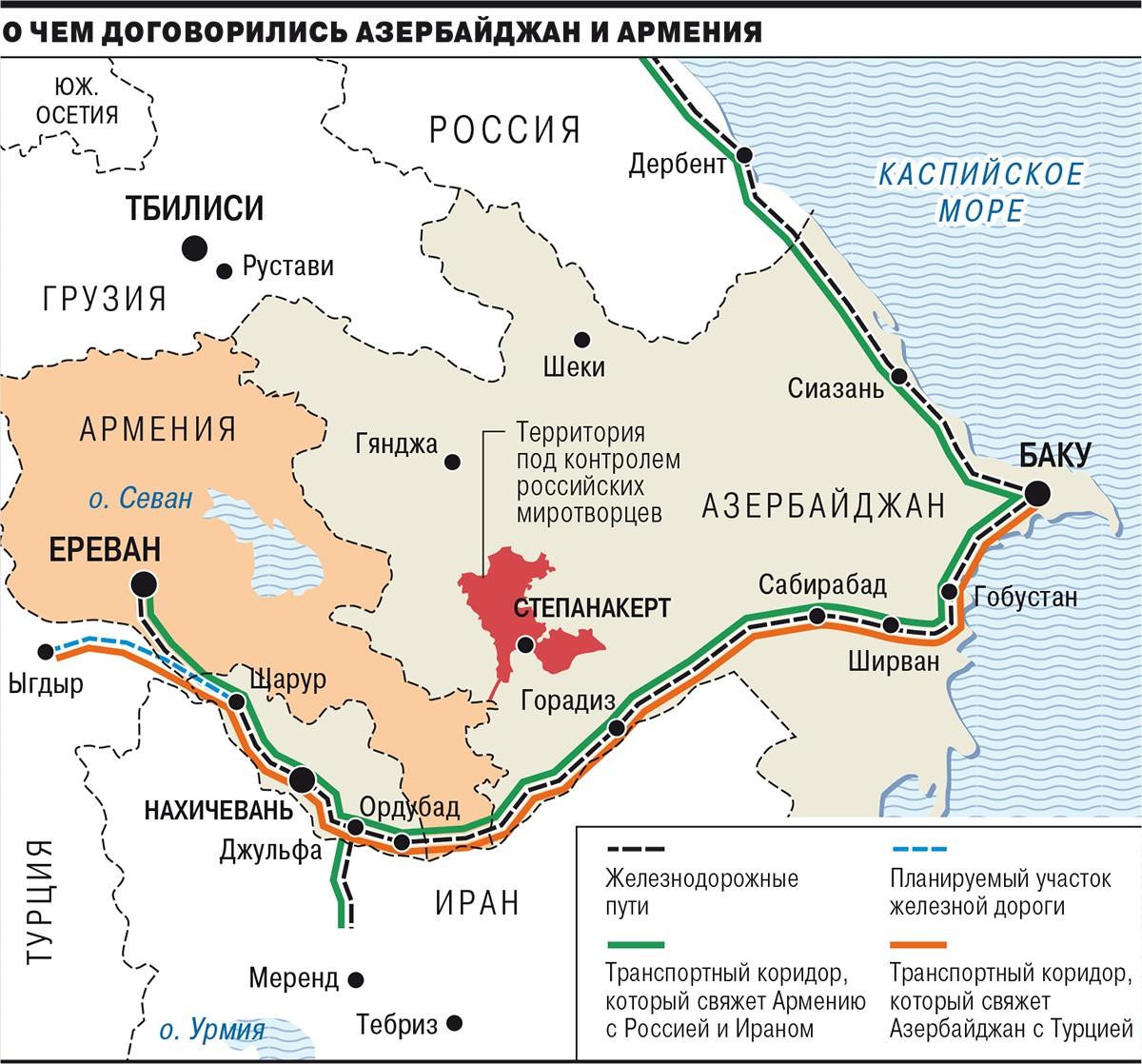
Unblocking Trade, Communication Links in Transcaucasia; Results of January 11 Moscow Meeting
The Russian Kommersant daily newspaper today published the map of the transport corridors and railways approved by the leaders of Armenia, Azerbaijan and Russia during a meeting in Moscow on January 11.
Prior to the meeting, it was announced that the talks would focus on regional economic issues, particularly the implementation of Point 9 of the trilateral statement of November 9, 2020, which envisages the unblocking of all economic and transport ties in the region.
Point 9 stipulates: “All economic and transport links in the region shall be unblocked. The Republic of Armenia guarantees the safety of transport links between the western regions of the Republic of Azerbaijan and the Nakhichevan Autonomous Republic with a view to organizing the unimpeded movement of citizens, vehicles and goods in both directions. Control over transport communication is exercised by the Border Guard Service bodies of the FSS of Russia.”
Following the January 11 meeting, the parties announced that a tripartite working group at the level of deputy prime ministers would be set up to "unblock all economic and transport ties in the region."
The published map shows the transport corridor, which will connect Nakhichevan with Zangelan, and then continue to Horadiz-Baku, passing through the territory of Armenia’s Syunik Province.
The black dotted line shows the railway link that will connect Yerevan with Baku via Syunik. Most of the railway will pass through Azerbaijan’s Nakhichevan Autonomous Republic.
The railway hasn’t operated since the 1990s Artsakh War.
Kommersant writes that Russia has suffered a lot from the closure of those transport routes.
When the railway connection from Russia to Georgia was cut off after the Georgian-Abkhazian conflict, Armenia was deprived of that railway, and Russian line was merged with the Turkish railway.
As a result, only the Yerevan-Tbilisi line operates today, and the only road connecting Armenia with Russia passes through the Strategic Road (Upper Lars Road), which is often closed due to bad weather conditions.
The road that will unite Armenia with Iran and Russia is marked on the map with a green line.
It too passes through Nakhichevan and enters Iran from Julfa. From Baku, the roadway then heads north to Russia via Dagestan.
The newspaper writes that theoretically the document signed in Moscow should be beneficial for all three parties.
Edmon Marukyan, head of Armenia’s opposition Lusavor Hayastan (Bright Armenia) parliamentary faction criticized the January 11 meeting for not addressing the issue of the return of Armenian POWs now held in Azerbaijan.
Vazgen Manukyan, the prime ministerial candidate of an anti-Pashinyan coalition in Armenia, said the January 11 meeting failed to address a number of Armenian concerns.
“There was no record of the settlement of the conflict within the OSCE Minsk Group on the status of Artsakh, which was also a great defeat. And, of course, the issue of the captives had to be clearly stated and resolved,” Manukyan said.
Manukyan, a former Armenian prime minister, also faulted Armenian PM Nikol Pashinyan for not raising the issue of Azerbaijani troop movements along Armenia’s borders, a violation of Point 1 of the November 9 ceasefire agreement.
Manukyan said the unblocking of regional communication routes is of strategic importance to Azerbaijan and that Baku will use its leverage in future negotiations for more concessions if Pashinyan remains in power.
 Videos
Videos Photos
Photos
Write a comment